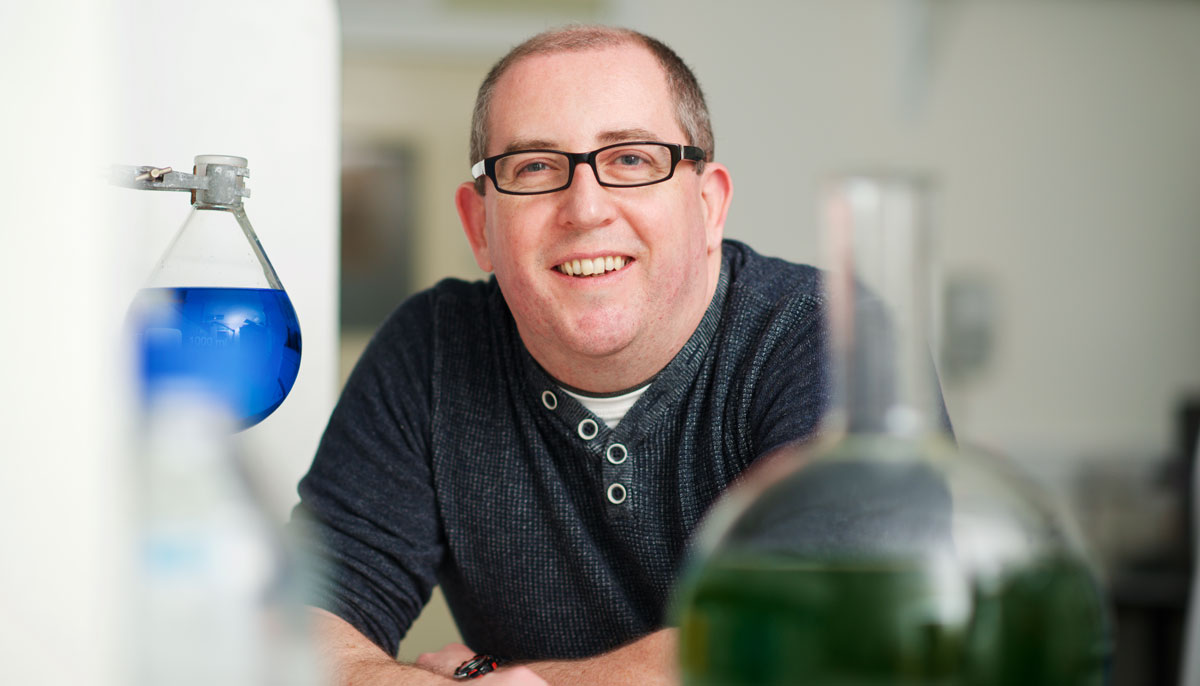Green beer
Green beer highlights the science behind the brew
Published on: 17 March 2017
Scientists at Newcastle University have found a way to accelerate the production of phycocyanin – a natural blue food colouring - by exposing algae to a very narrow wavelength of light.
Working with Scottish Bioenergy, the team found that by limiting all other wavelengths, the algae – known more commonly as Spirulina – will start to mass-produce the blue pigment when exposed to long wavelength red light.
Scottish Bioenergy are now using the technology to produce ‘blue’ on an industrial scale as demand for the natural colourant continues to rise, not just in food but also for pharmaceuticals and cosmetics.
And Stu Brew - Newcastle University’s student-run, sustainable micro-brewery – have created a limited edition St Patrick’s Day green pint by mixing the blue phycocyanin with their yellow-coloured pale ale to promote the research

Responding to demand
Dr Gary Caldwell, Senior Lecturer in Applied Marine Biology at Newcastle University, explains:
“Normally the algae would use other parts of the light spectrum so by exposing it to just this very narrow band leaves it with two choices – either it dies or it makes more of the phycocyanin-producing proteins to survive.”
Dr Chelsea Brain, who carried out the research as part of her EngD, a joint project with Newcastle University and Scottish Bioenergy, adds:
“Demand for phycocyanin has increased massively because people want natural not artificial food colourants, but at the moment it’s still very expensive to produce.
“We found that we could produce over five-times the amount of ‘blue’ using long wavelength red light, reducing the cost of production and also improving efficiency.”
Blue is good for you
Unlike its artificial equivalent, Phycocyanin is a powerful anti-oxidant and anti-inflammatory and demand for the natural blue pigment has grown exponentially in recent years.
DC Van Alstyne, Scottish Bioenergy's CEO explains:
“Phycocyanin is already used as an anti-oxidant and anti-inflammatory and the use of Phycocyanin as a natural blue food colorant has experienced exponential growth in the past 5 years after being approved by the FDA as a food colorant in 2013.
“But demand has now outstripped supply. This project with Newcastle University and Stu Brew feels like a homecoming. As we scale and Internationalise it's lovely to be involved in a project that brings us back to Newcastle; the roots of our company are fed by the Tyne.”
Dr Chris O’Malley, a lecturer in Chemical Engineering who leads the research arm of the Stu Brew initiative, adds:
“We were approached by the Student’s Union to produce a special beer for St Patrick’s Day. This collaboration with Scottish Bioenergy gave us an opportunity to integrate some exciting university research with one of our products in a fun and interesting way.
“Stu Brew is about more than just making beer. We are also conducting our own research into ways to make the brewing process more sustainable and engaging with the local microbrewery community to share best practise.”




